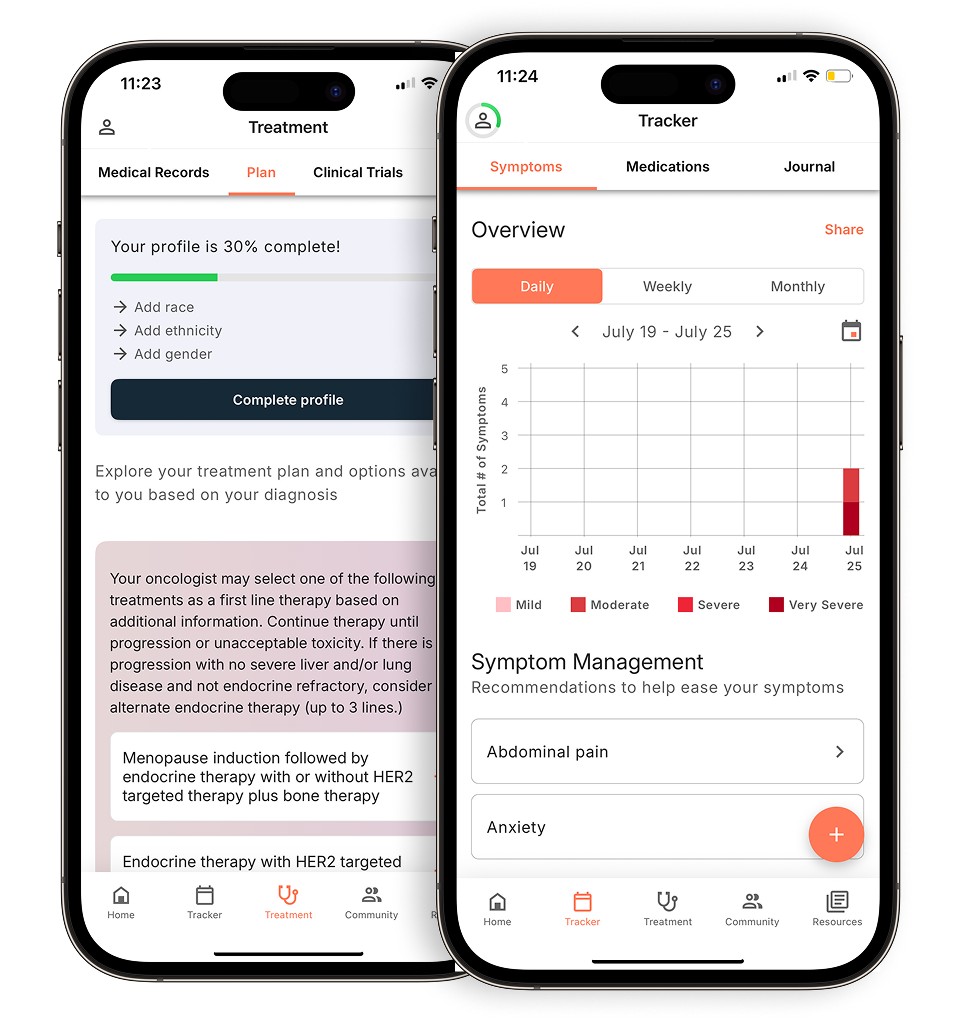Radiation therapy is a crucial component of the treatment plan for many breast cancer patients. By using high-energy X-rays or other forms of radiation, it targets and kills any remaining cancer cells after surgery, significantly reducing the risk of cancer recurrence.
Just like surgery and medical oncology decisions, radiation therapy comes with options too. Understanding the latest advancements and factors to consider can help you choose the most appropriate approach for your treatment plan.
For those who undergo a lumpectomy (breast-conserving surgery), radiation therapy is typically recommended after you’ve healed from surgery to target any residual cancer cells in the breast area. This combination of lumpectomy and radiation therapy, known as breast-conserving therapy, has been proven to be as effective (or even more effective) as a mastectomy in treating early-stage breast cancer.
The standard of care approach after a lumpectomy is whole-breast radiation therapy, where the entire breast receives radiation over the course of 3-6 weeks. In some cases, partial-breast irradiation (PBI) may be an option. This method targets only the area around the tumor site, significantly shortening the treatment duration to 1-2 weeks.
Radiation therapy may also be recommended after a mastectomy for certain high-risk cases, such as when cancer is found in the lymph nodes or the tumor is large. The radiation targets the chest wall and surrounding lymph nodes to eliminate any remaining cancer cells.
Over the last several years, more advanced radiation therapy techniques have become available, offering precise targeting and reduced exposure to healthy tissues. You should discuss these three options with your Radiation Oncologist to see if one makes sense for your treatment plan.
- Proton Therapy: This cutting-edge approach uses proton beams instead of X-rays, allowing for more precise tumor targeting while minimizing radiation exposure to surrounding organs like the heart and lungs.
- Brachytherapy: Also known as internal radiation therapy, brachytherapy involves placing radioactive seeds or pellets directly into the tumor site or the area where the tumor was removed.
- Prone Breast Radiation Therapy: In this technique, you lie on your stomach during treatment, allowing the breast to hang away from the body and reducing radiation exposure to the heart and lungs. This approach is particularly beneficial for those with larger breasts or with cancer in their left breast due to proximity to the heart.
The choice of radiation therapy approach depends on various factors, including the cancer stage, tumor size, lymph node involvement, and individual patient characteristics and preferences. Your radiation oncologist will work closely with your breast cancer team to determine the most appropriate and effective treatment plan for you. Radiation therapy plays a vital role in the comprehensive treatment of breast cancer, offering effective local control and reducing the risk of recurrence.
With ongoing research and technological advancements, radiation therapy continues to evolve, providing more personalized and precise treatment options for breast cancer patients.
Take control of your breast cancer treatment journey with the Outcomes4Me app. Track your progress, manage your treatments, and access the latest information and resources tailored to your needs. Download the Outcomes4Me app today and stay active and empowered in making choices for your care.
Personalized support for real care decisions
Understand your diagnosis, explore clinical trials, and track symptoms--all in one place.
Get started
Compare treatments, prepare for appointments, and track side effects—all in the app
Built for your diagnosis, Outcomes4Me gives you the tools to make confident, informed decisions—right when you need them.
Continue in app






